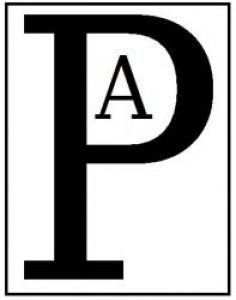
When bringing private cartel damage claims to court, there are many aspects to consider (for an overview, check out our previous post). One that should be particularly well thought about in advance is which court in which country a damage claim should be put to. Obviously, claimants are not completely free to decide, but in most cases, there is a certain leeway that one may take advantage of.
The basics
In addition to the statutory provisions that govern local jurisdiction of courts, the parties to the proceeding and the respective characteristics of the anti-competitive conduct have decisive influence on the question of local jurisdiction.
In Germany, private cartel damage claims may generally be brought to court at either the place of the defendant’s residence or the place of the harmful event. EU law foresees that a defendant domiciled in a Member State of the European Union may also be sued, where he is one of a number of defendants, in the court where any of the other defendants is domiciled, provided that the claims are so closely connected “that it is expedient to hear and determine them together to avoid the risk of irreconcilable judgments resulting from separate proceedings”. This is regularly assumed in private damages cases which are based on the same cartel infringement.
Where a court has jurisdiction as regards one so-called “anchor defendant”, it can establish jurisdiction for all other defendants. Where different claimants sue different defendants for alleged cartel damages suffered, the situation obviously becomes multifaceted and regularly opens up different references for determining local jurisdiction.
Anchor defendant 2.0
In a recent judgement, a Dutch appeals court seems to have applied a remarkable broad understanding of who can be an anchor defendant, i.e., which cases must be heard and determined together to avoid the risk of irreconcilable judgments resulting from separate proceedings.
The court apparently ruled that a company which was sued for alleged damages suffered in relation to the EIRD/EURIBOR cartel could be the anchor defendant in a case also directed against other companies that were sued for alleged damages suffered from conduct in relation to the YIRD/JPY LIBOR – so in fact a different – cartel.
The court based its decision on the finding that, in the court’s view, the cartel cases were closely connected, referring in particular to the same legal situation, (partly) overlapping infringement periods, and the anchor defendant being among the relevant group of banks.
Although there certainly are parallels between the two cases, the EIRD/EURIBOR case on the one hand and the YIRD/JPY LIBOR case on the other hand remain two separate cartel decisions by the European Commission. In this respect, the interpretation of the Dutch appeals court is remarkable, and it remains to be seen whether this is an exception or possibly marks a trend shift in the interpretation of European law (at least in the Netherlands).
Pros and cons of different courts (and jurisdictions)
Once options are sorted out as regards which courts/jurisdictions are generally suitable for filing a lawsuit, claimants have to decide which court appears to be best placed for the respective claim.
Over the years, in what one could call “litigation politics”, courts as well as jurisdictions as a whole have “made themselves a name”. Some may be particularly known for their “generosity” in dealing with disclosure claims, while others are, e.g., very reluctant in estimating damages. Still other courts/jurisdictions may be known for a procedural structure that allows for either very limited or comparatively extensive (third) party submissions. And again, other courts/jurisdictions may provide for different appeal options or foresee, e.g., different limitation periods.
These and other circumstances need to be considered and balanced when choosing where to bring a private cartel damage claim to court. Depending on the specific circumstances of the case, one court may be “more suitable” than another.
Outlook
The “market” for private cartel damage claims has developed significantly in recent years. As a result, national courts have been faced with an increasing number of cases and consequently had to learn how to deal with them. In doing so, courts (and jurisdictions) have, to a certain extent, developed different approaches.
Against this background, claimants are well-advised to keep a close eye on further future developments in order to – if there are several competent courts to choose – opt for the most suitable, i.e., favorable court/jurisdiction for their proceeding. And (potential) defendants should prepare accordingly.
Photo by Joshua Harris on Unsplash
